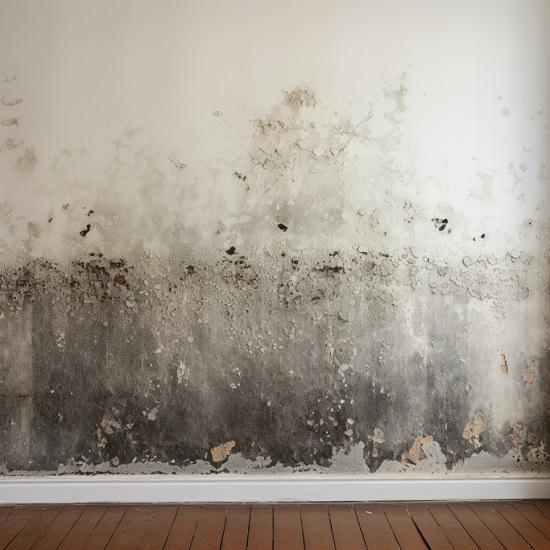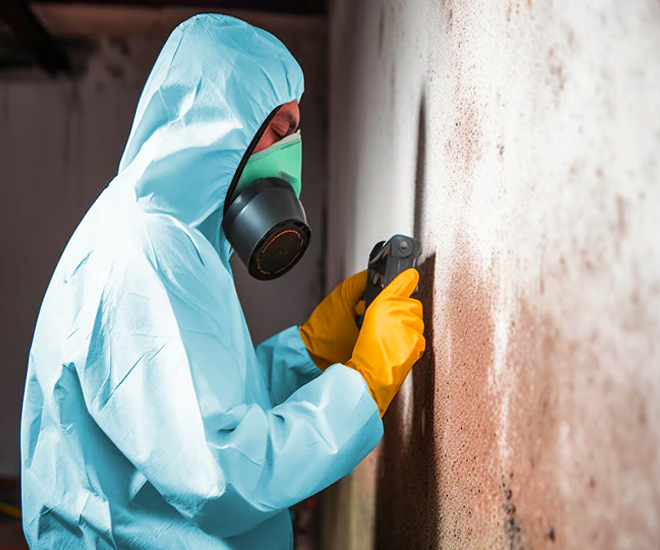Locating Post Remediation Inspection Near Me Providers
Locating Post Remediation Inspection Near Me Providers
Blog Article
Key Tips for Successful Article Mold Remediation
Dealing with mold problems in a efficient and prompt fashion is important for maintaining a healthy and balanced indoor environment. Efficiently completing mold and mildew removal is a complex process that needs focus to detail and adherence to specific protocols. From inspecting dealt with areas to executing wetness control steps, each step plays a critical role in guaranteeing the effectiveness of the removal process. Nonetheless, there are crucial post-remediation steps that are just as essential however usually forgotten. These actions not just verify the success of the removal efforts however also add to preventing future mold growth.
Evaluation of Treated Locations
Upon conclusion of the mold removal process, a comprehensive assessment of the dealt with locations is necessary to make sure the performance of the remediation initiatives. This inspection functions as an essential action in the post-remediation phase to verify that the mold removal and cleanup procedures succeeded in eliminating the mold infestation and bring back a risk-free interior environment. The inspection needs to be performed by certified specialists that have the know-how to evaluate the remediated locations carefully.
These include aesthetic assessments to examine for any type of signs of mold and mildew development or water damage, moisture degrees to confirm that the area is dry and cost-free of excess moisture that can promote mold and mildew re-growth, and air top quality testing to make certain that the indoor air is safe to take a breath. In addition, the examination might include using specialized tools such as dampness meters and thermal imaging cams to identify covert mold and mildew or dampness pockets that can lead to future mold and mildew issues if left unchecked.

Wetness Control Actions
Reliable dampness control steps are crucial for avoiding mold and mildew development and preserving a healthy indoor atmosphere. In addition, utilizing dehumidifiers in damp locations can assist decrease moisture levels, making it harder for mold to prosper.
Consistently keeping the structure and checking's exterior can likewise protect against wetness intrusion. After mold remediation. Ensuring that gutters are clear, downspouts straight water far from the structure, and the roofing system remains in good problem can aid prevent water from leaking into the structure. Correctly securing doors and windows can additionally aid keep moisture out
Any spills or leakages ought to be cleansed and dried out within 24-48 hours to prevent mold development. By executing these dampness control measures, the threat of mold reoccurring can be dramatically reduced, producing a healthier indoor setting.
Appropriate Air Flow Evaluation
An indispensable element of making certain a healthy and balanced indoor atmosphere blog post mold and mildew removal is performing a comprehensive evaluation of the air flow system. Post Mold remediation cleaning. Appropriate air flow assessment plays an important role in preventing future mold and mildew development and preserving air quality within the damaged space. During the assessment, professionals examine the performance of the ventilation system, looking for any kind of blockages, leakages, or malfunctions that can impede proper airflow. It is vital to ensure that the ventilation system is effectively sized for the space it serves which it fulfills industry standards for air navigate to this site currency exchange rate.
In addition, assessing the air flow system consists of analyzing the distribution of air throughout the area to determine any kind of areas of inadequate flow where moisture and contaminants could build up. Proper air flow not only helps in regulating humidity levels but additionally help in getting rid of air-borne mold spores and various other toxins, thus boosting general interior air top quality. By addressing any ventilation issues post mold remediation, property owners can create a much healthier and much more comfy atmosphere for residents while reducing the threat of mold re-infestation.
Cleansing and Sanitation Protocols
To make certain detailed mold removal, thorough adherence to certain cleansing and sanitation protocols is essential. Cleansing and sanitation procedures play a vital function in the post-mold remediation phase to avoid the reappearance of mold and mildew growth and ensure a risk-free and healthy atmosphere.
In addition, implementing precautionary steps such as applying mold and mildew preventions and keeping correct air flow can aid minimize the risk of future mold and mildew infestations. By complying with rigorous cleansing and disinfection methods, home owners can make certain the successful obliteration of mold and mildew and create a healthy interior atmosphere for occupants.
Monitoring and Maintenance Plan
Applying a normal monitoring and maintenance plan is necessary for ensuring the long-lasting performance of mold and mildew remediation initiatives. As soon as mold remediation is finished, it is vital to establish a tracking routine to review the success of the removal process.
Additionally, establishing an upkeep strategy is crucial to look at here stopping future mold concerns. This plan might include actions such as repairing plumbing leaks, improving air flow, and regulating indoor humidity degrees. Normal maintenance not only helps in avoiding mold and mildew yet additionally adds to maintaining a healthy indoor setting. It is suggested to record all tracking and upkeep tasks to track progression and make certain uniformity in the maintenance of the remediated areas. By carrying out a comprehensive monitoring and upkeep strategy, the danger of mold re-emergence can be dramatically reduced, promoting a clean and secure living or functioning setting.
Conclusion
To conclude, successful article mold remediation includes complete examination of treated locations, application of moisture control steps, assessment of correct air flow, adherence to cleaning and disinfection procedures, and facility of a monitoring and maintenance plan. These key steps are necessary to make certain that mold and mildew growth is successfully removed and prevented from persisting in the future. By adhering to these standards, residential property owners can keep a risk-free and healthy environment for occupants.
Upon conclusion of the mold and mildew remediation procedure, an extensive examination of the dealt with locations is imperative to make certain the performance of the removal initiatives. These consist of aesthetic analyses to examine for any type of indicators of mold and mildew development or water damage, wetness levels to validate that the area is dry and cost-free of excess moisture that could promote mold re-growth, and air high quality screening to ensure that the interior air is secure to breathe. Furthermore, the evaluation might entail making use of specialized devices such as dampness meters and thermal imaging electronic cameras to spot surprise mold or wetness pockets that could lead to future mold problems if left unchecked. By resolving any kind of ventilation concerns post mold remediation, home owners can create a try this web-site much healthier and extra comfy atmosphere for passengers while minimizing the risk of mold re-infestation.

Report this page